The previous post in this series was supposed to be the last. But in the course of taking two months to write it, I managed to forget about another, earlier association between a White Australia and an Australian airship. This one wasn’t a real airship; it was a fictional one which appeared in Randolph Bedford’s 1909 play, White Australia; or the Empty North — effectively an Australian version of Guy du Maurier’s An Englishman’s Home. Does this shed any light on Alban Roberts’ 1914 airship, White Australia?
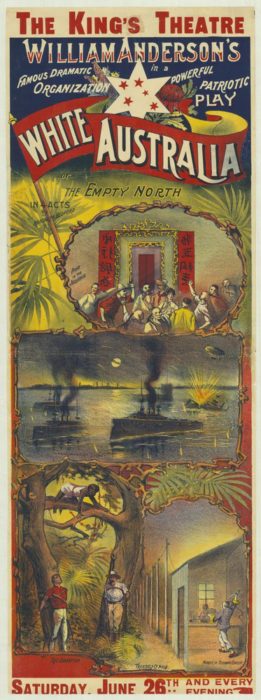
Well, probably not directly. The play seems to have been produced only twice, both times in Melbourne, first for a single night in February 1909, and then for 17 performances at the King’s Theatre in June and July the same year. It was fairly well-received, with good audiences thoughout its run (there’s even a photo of the first-night crowd).1 But Roberts spent 1909 in Britain, where he was already working on finding military applications (and funding) for his ideas.2 Perhaps he read about the play somewhere — the major Australian papers would have been available in clubs and libraries, with a delay of 6 or 7 weeks — and perhaps it made an impression, as evidence of Australia’s increasing airmindedness, but it still seems like a stretch to think that it could have inspired him to name his own airship White Australia after the passage of 5 years.
In any case, the airship in the play is not called White Australia, but Victoria. What Bedford’s play might shed light on is, firstly, as evidence of Australian paranoia about the perceived threat of Asian invasion, and secondly, as evidence for Australian hopes that airpower could defend against this threat. The former aspect is how the play is usually is usually discussed by historians, the latter is not — so let’s look at that.
The play White Australia revolves around the attempted theft of an Australian airship by a Japanese spy, in order to prevent its use against the Japanese fleet which is about to attack Sydney. Indeed, the airship is explicitly designed for military purposes, as is clear from the first discussion of it, between its patrioric inventor Macquarie and his sceptical friend Cedric:
CEDRIC: But what’s the use of the airship; for commercial purposes, I mean.
MACQUARIE: Not yet, but for war — yes. If Australia should be threatened tomorrow we are ready.3
Cedric, who is English-educated, effete, and, as it turns out, a traitor (albeit an unwilling one), scorns the idea of Australian defence sufficiency:
CEDRIC: War! [Laughs.] Why with England nobody can touch you and without England you’d be taken in a week. Trust to England!4
His uncle, Pearse, the owner of a station in the Northern Territory, tries to set him straight:
PEARSE: We are men, not children; and men don’t hide behind their mother’s skirts.
MACQUARIE: But do you know how big Australia is? China is 760 miles nearer to Port Darwin than Melbourne is. But Australia will not be taken I hope till every Australian has first died in her defence.5
Most of the play is set in or near Port Darwin (now Darwin), the only substantial settlement in this ’empty north’; its relative closeness to Asia was part of the fear of white nationalists like Macquarie (and Bedford), along with its lack of white people. Later, Macquarie is talking to his sweetheart, Pearse’s daughter Victoria and reveals a yearning for a national baptism in blood (six years before Gallipoli, be it noted), while she has faith in her namesake:
MACQUARIE: Life is too easy for us here. Australians will never find self-respect until we find a war.
VICTORIA: Oh, don’t! Don’t!
MACQUARIE: I will not frighten you, but we got Australia without a fight and we may lose it for want of one.
VICTORIA: Never, while we have the airship.6
For their part, the Japanese — represented here by the spy Yamamoto, Pearse’s servant — well understand the value of the airship:
YAMAMOTO: The fleet is going South and when it is ready war will be declared and then for the rebellion in Port Darwin. There are but a handful of whites in this Great territory — not one shall live.
CEDRIC: My cousins?
YAMAMOTO: I want not their lives; but for Macquarie —
CEDRIC: Yes, kill him.
YAMAMOTO: Not so. Not so. There is but one thing to spoil the invasion, and wreck our fleet.
CEDRIC: And it?
YAMAMOTO: Australia has no ships and no men but fourteen parliaments and many, many talkers of much wind. Macquarie’s airship only can save Australia and destroy our fleet. Also he has some new explosive of terrible power […]7
To cut a long and rather racist story short (as well as sinister but disloyal Asian Australians, there are loyal but comic Indigenous Australians), the Victoria heads south after the Japanese occupation of Port Darwin, and after Yamamoto and Cedric (partly redeeming himself) struggle and fall to their deaths, it arrives at Sydney just in time to save Australia. Act IV, Scene 3 — the scene from the theatrical poster at the top of the post (that’s clearly Fort Denison in the middle distance) — reads:
Change to Jap fleet in Sydney Harbour, the city by night — bombardment and partial destruction of the city. Noises and screams from the shore. The airship appears above and drops explosive shells on the Jap fleet, sinking one ship after another, the last ship attempts escape, the airship follows and sinks her.8
But while the Sydneysiders cheer their saviour in the sky, it seems that technology is not, in itself, enough to preserve White Australia in the long run. At least Macquarie the airship engineer doesn’t lay any special emphasis on aviation in his stirring speech at the end of the play:
MACQUARIE: Brother Australians! Today by some intelligence, with the aid of a strengthening love [turns to VICTORIA] and by much of that luck which belongs to the drunkard and the fool, Australia has decisively routed its present enemy. But we shall have more. Our rich and empty land is a permanent temptation to the poor and overcrowded world and if we would hold Australia we must be strong. No more unpreparedness — no more made [sic; mad?] devotion to vicarious sport — arm yourselves and think, get guns and resolution.
CROWD: Hooray!
MACQUARIE: Cheer today but remember tomorrow. Down with the time servers, the men who look far off for snobbish rewards, careless of the wondrous nation that is yet to be.
CROWD: Australia, Australia, God bless her.
MACQUARIE: How shall we win through to nationhood? Not by reckless borrowing or sybaritic living but by stern independence and noble simplicity, through the storm of meanness and affectation, through hatred of shams, hatred of all coward blindness up to sturdy freedom.9
Macquarie ends by imploring the crowd to do their duty in ‘reserving our wondrous continent forever for the white man‘.10
So while there is clearly much going on in White Australia in nationalist and racial terms (fears of Japan, four years after Tsushima; concerns about about the lack of white people in the vast north; contrasts between effete British/city lifestyles and the manly men of the Outback), in the end I don’t think there is so much here in airminded terms, apart from borrowing the latest technology from Europe for a semi-plausible resolution to the problem that so many invasion stories have, of wanting to expose the dangers of drift and lethargy while providing a happy ending for audiences and readers. While there was considerable praise for the spectacle of the airship scenes, few of the press notices commented on the airpower aspects of the plot. Table Talk certainly didn’t place much faith in the potential of aviation to transcend distance, since it claimed that White Australia ‘does demonstrate the necessity for girdling Australia with railways for defence as well as for industrial purposes’.11 A couple of weeks later it criticised the scene where Victoria destroyed the Japanese fleet by noting that ‘Sir Hiram Maxim, who should be an authority, holds that little damage could’ be accomplished in this manner unless the explosive were actually dropped into a confined space, such as the funnel of the warship’.12 And that seems to be about all the effect the play had on the national discourse. (Although it is interesting that the 1909 Australian phantom airship wave did start near Melbourne only a few weeks after White Australia finished its run…)
At best, White Australia the play and White Australia the airship are probably examples of convergent evolution, a common cause: Bedford spelled out what Roberts seemed to have been content to imply. As long as Australians worried about keeping Australia white, the idea of a technological defence would keep coming back, as it did again in 1918. These days we’ve moved on from absurd fears of being swamped by Asians to absurd fears of being swamped by Muslims, and while we do have technological barriers, we prefer to rely on institutionalised cruelty instead to keep Australia as white as possible. How times change.
Image source: State Library of Victoria.
![]() This work is licensed under a Creative Commons Attribution-NonCommercial-NoDerivatives 4.0 International License.
Permissions beyond the scope of this license may be available at http://airminded.org/copyright/.
This work is licensed under a Creative Commons Attribution-NonCommercial-NoDerivatives 4.0 International License.
Permissions beyond the scope of this license may be available at http://airminded.org/copyright/.
- The Age, 28 June 1909, 9; The Star (Sydney), 28 June 1909, 5; Table Talk (Melbourne), 1 July 1909, 10, 24. [↩]
- He and his wife sailed from Sydney for London in August 1908; in February 1909 he joined the Aero Club; in November he was ballooning over Kent. [↩]
- Randolph Bedford, White Australia; or, the Empty North (South Brisbane: Playlab, n.d. [2013]), 28. I remember having to trek out to La Trobe or Monash during 4th year to read a photocopy of a typescript version — now a modern edition can be cheaply purchased online. Amusingly, David Walker called White Australia ‘unpublishable’ (Anxious Nation: Australia and the Rise of Asia, 1850-1939 (St Lucia: University of Queensland Press, 1999), 110; this edition certainly has plenty of contextualisation for the modern reader in the form of an introduction by Stephen Carleton and Richard Fotheringham, along with a disclaimer. [↩]
- Bedford, White Australia, 29. [↩]
- Ibid., 29. [↩]
- Ibid., 33. [↩]
- Ibid., 37. [↩]
- Ibid., 102. [↩]
- Ibid., 108. [↩]
- Ibid., 109. [↩]
- Table Talk (Melbourne), 1 July 1909, 24. [↩]
- Ibid., 15 July 1909, 24. [↩]


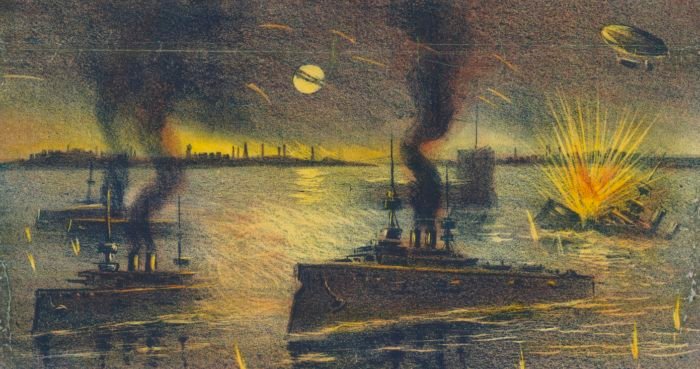
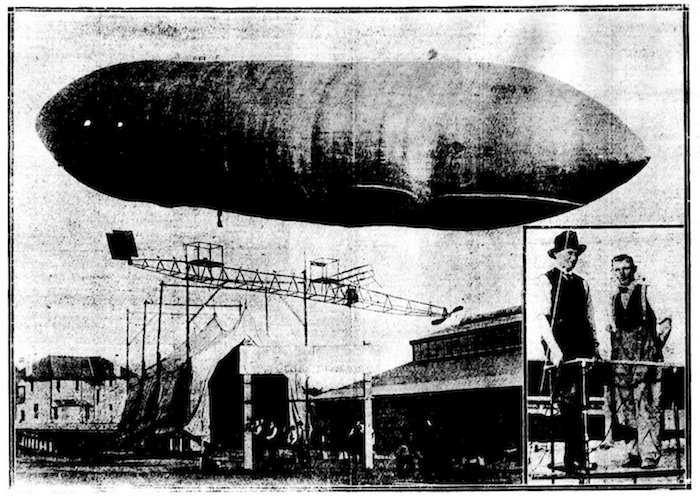
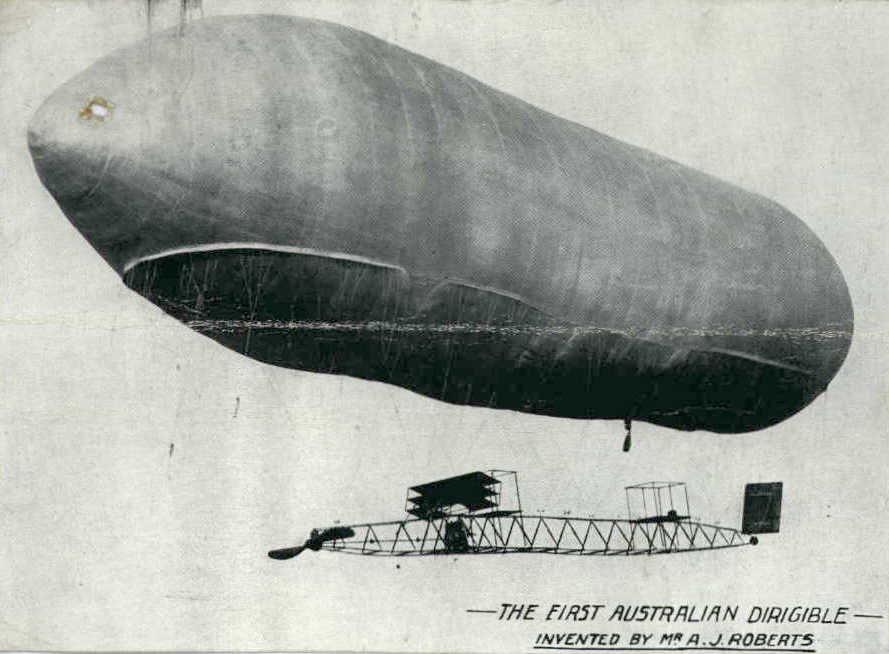

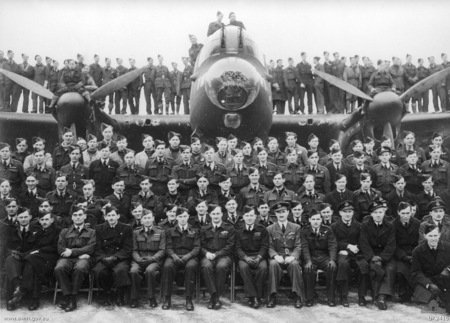
Well, at least Bedford managed to call his Japanese character ‘Yamamoto’. Which might just be taken for a sort of prescience.
Possibly not so prescient — Yamamoto seems to be a fairly common name in Japan; the Minister of the Navy during the Russo-Japanese War was an Admiral Yamamoto apparently unrelated to the later, more famous one.